Ramp Requirements [§405]
Slope [§405.2] and Cross Slope [§405.3]
Slope represents the proportion of vertical rise to horizontal length and is specified in the Standards as a ratio (e.g., 1:12). It also can be expressed as a percentage, pitch, or in degrees. The running slope is to be uniform along a run, although slight variations may occur with certain materials such as concrete. No other changes in level other than the running slope (1:12 max.) and cross slope (1:48 max.) are permitted. Variations in slope, such as grade breaks within runs, can disrupt wheelchair travel.
Recommendations: Providing the least possible slope below the 1:12 (8.33%) maximum offers better usability for a wider range of users. Specifying a running slope of 7.5% maximum and a cross slope of 1.5% maximum for exterior ramps will accommodate most irregularities or variances due to construction methods or materials according to a study sponsored by the Board (“Dimensional Tolerances in Construction and for Surface Accessibility” by David Kent Ballast.)
Clear Width [§405.5]
Ramp runs must have a clear width of 36” minimum (measured between handrails where provided). The width of ramps that are part of a means of egress may further be determined by applicable life safety codes and requirements for minimum exit widths greater than 36”.
Employee Work Areas
Common use circulation paths must be accessible in work areas 1,000 sq. ft. or more in size. Ramps on these circulation paths must comply except that:
Rise [§405.6]
The height of runs is limited (30” max.), but there is no limit on the number of runs a ramp may have. Long ramps with many runs can be strenuous for people using manual wheelchairs. While intermediate landings offer resting points, they do not reduce the amount of effort that must be exerted to negotiate multiple runs.
Landings [§405.7]
Level landings are required at the top and bottom of each run. Changes in level greater than 1:48 are not permitted at landings. Landings must be designed to prevent the accumulation of water.
Intermediate landings between runs must be at least 60” wide clear and 60” long clear where ramps change direction (any change from linear). Handrails, edge protection, vertical posts and other elements cannot obstruct or overlap the minimum 60” by 60” clearance. The 12” minimum handrail extensions required at the top and bottom of ramp runs must be in the same direction of the run, but they can turn or wrap where handrails are continuous at the inside turn of dogleg or switchback ramps.
Intermediate Landings Where Ramps Change Direction
Doorways at Landings [§405.7.5]
Required door maneuvering clearances can overlap ramp landings (it is advisable to locate the swing of doors outside ramp landings for greater safety).
Doorways at Ramp Landings
Handrails are required on both sides of ramps with a rise greater than 6”. The Standards do not require lower handrails serving children except at ramps serving play areas, but include a recommended height (28” max.) and separation (9” min.) from the required handrail to minimize entrapment hazards.
Handrail Height and Clearance
Handrail Continuity and Extensions
Surface requirements and clearances facilitate a power grip along the length of handrails. Handrails can have circular or non-circular cross-sections, but must have rounded edges. The gripping surface and adjacent surfaces must be free of abrasive or sharp elements.
Aisle Ramps in Assembly Areas
In assembly areas, aisle ramps required to be accessible are exempt from some handrail requirements. Aisle ramps (or portions of them) adjacent to seating that are not part of a required accessible route to accessible seating or to other accessible elements do not have to comply with any ramp or handrail requirements.
Aisle Ramps in Assembly Areas
Aisle ramps that are part of a required accessible route can have handrails on at least one side or within the aisle width instead of on both sides as required for other types of ramps. (§505.2)
Edge Protection [§405.9]
Edge protection along ramp runs and landings keep wheelchair casters and crutch tips on the surface and can be provided by curbs, barriers, or extended surfaces.
Curbs if used must be at least 4” high.
Rails or other barriers must prevent passage of a 4” diameter sphere.
Vertical pickets used for edge protection must prevent passage of a 4” diameter sphere.
Run and landing surfaces that extend at least 12” beyond the inside face of handrails will provide adequate edge protection by preventing wheelchair casters and crutch tips from slipping off the edge.
Edge protection is not required at:
-
ramps no higher than 6” that have side flares
-
ramp landings serving an adjoining run or stairway
-
sides of ramp landings with vertical drop-offs not exceeding ½” within 10” of the minimum landing area
Wet Conditions [§405.10]
Landings subject to wet conditions must be designed to prevent the accumulation of water. Landings are permitted slopes not steeper than 1:48 to allow for drainage.

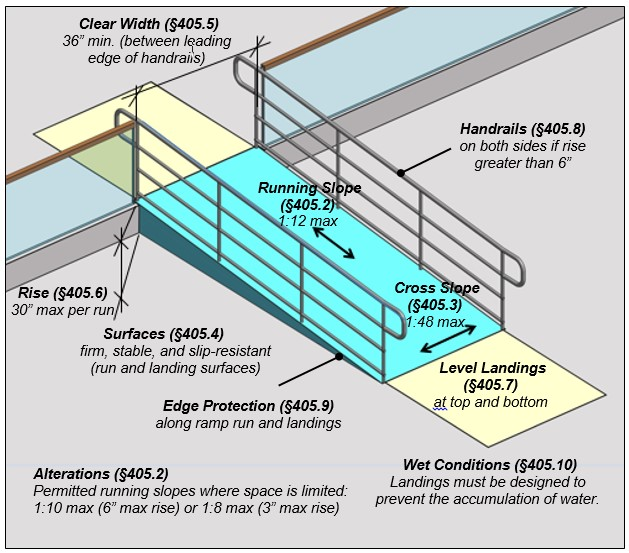


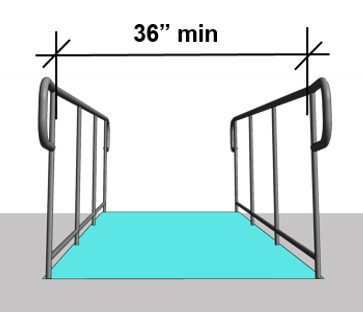
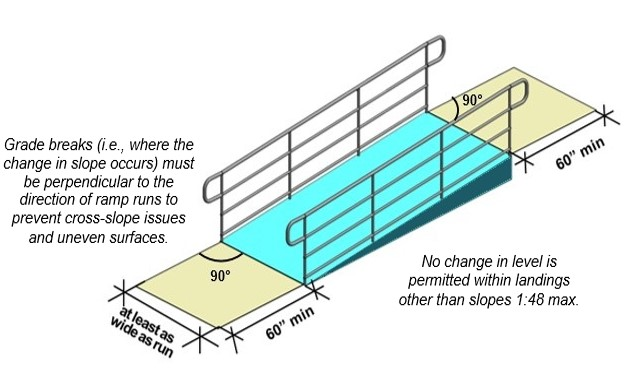
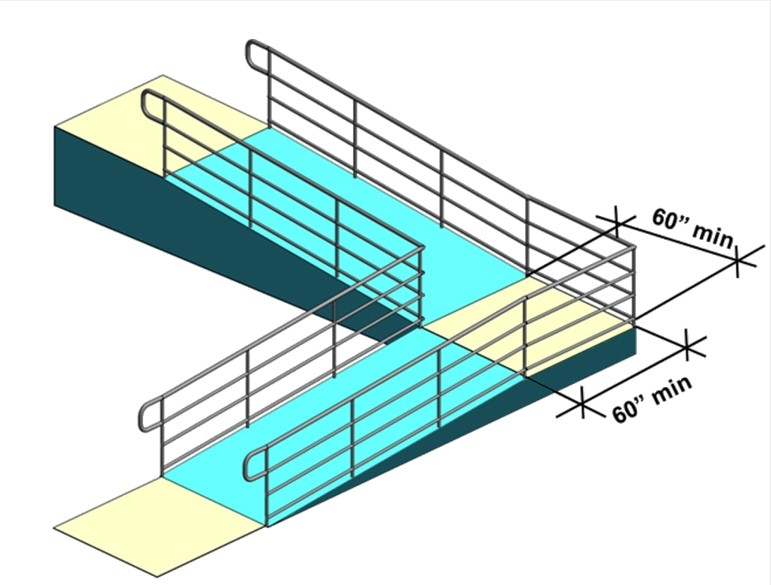
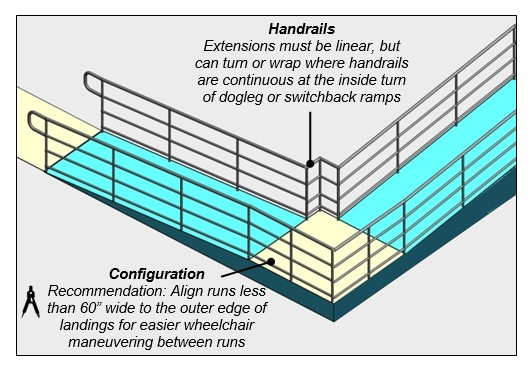
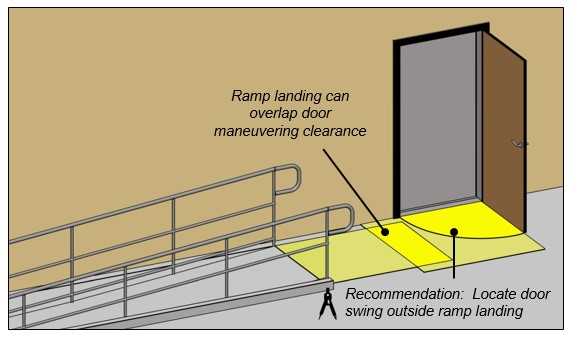
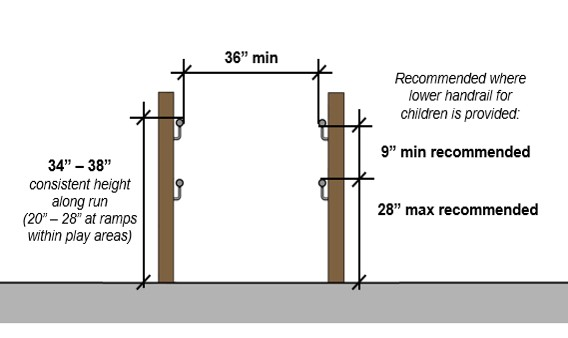
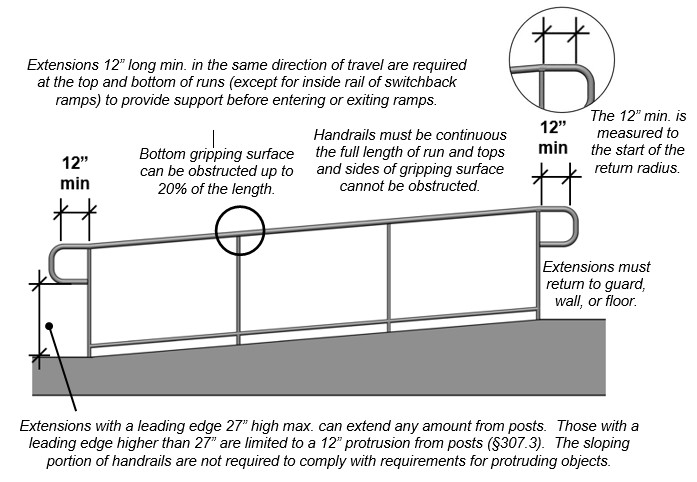
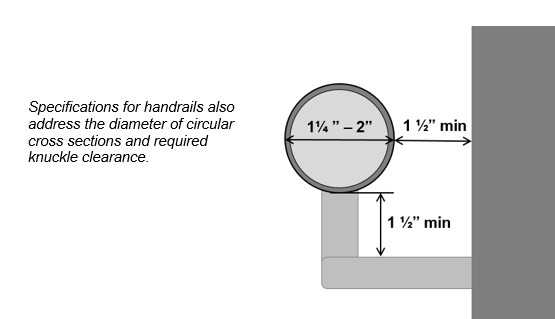
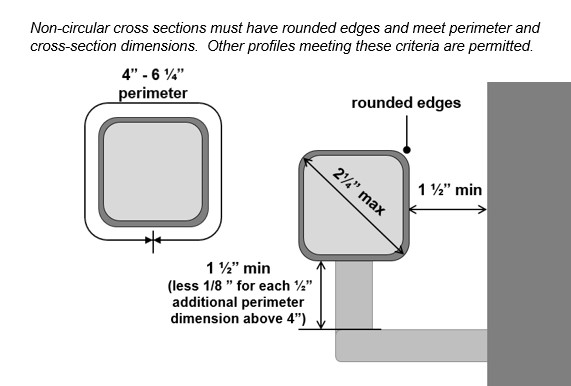

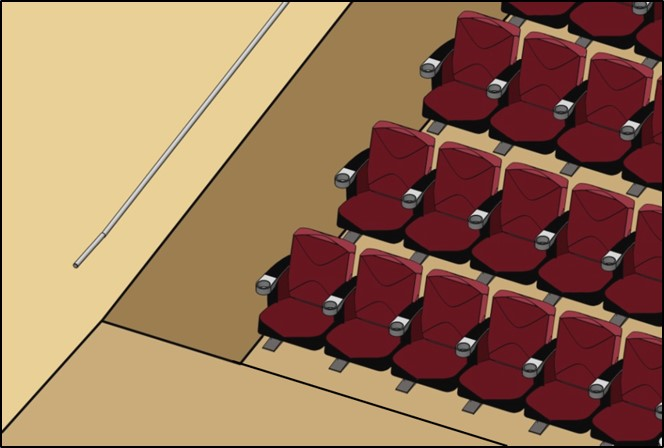

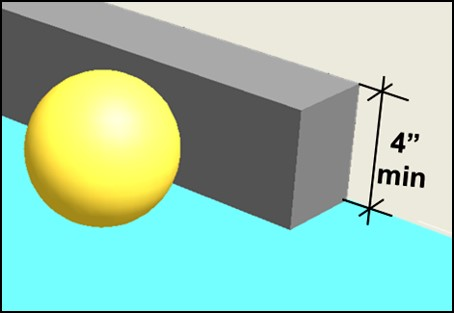
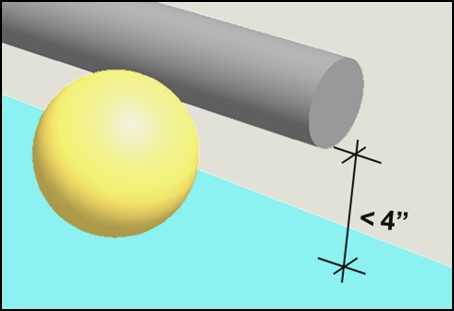
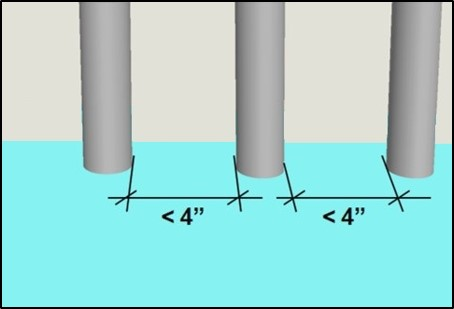
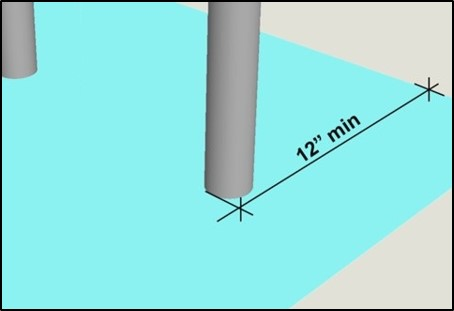
User Comments/Questions
Add Comment/Question